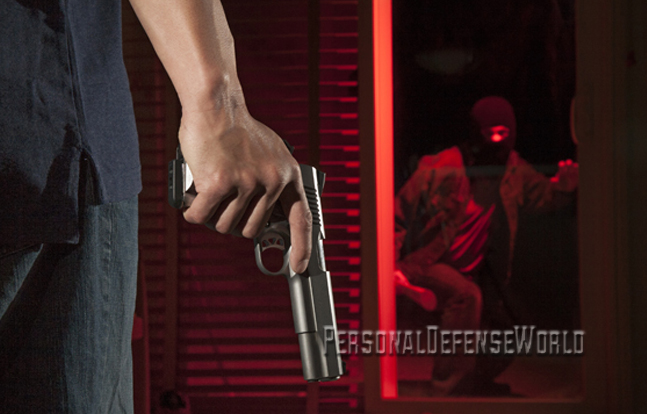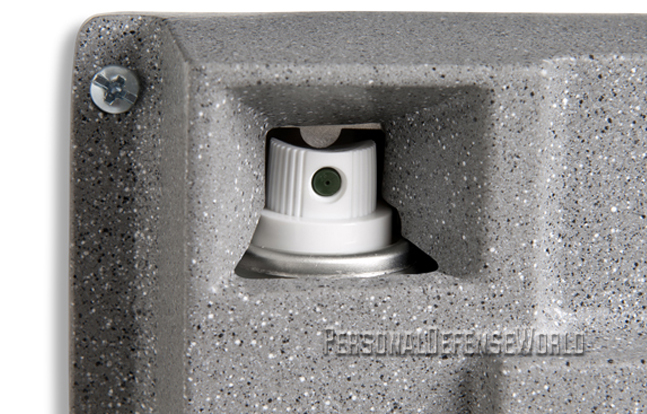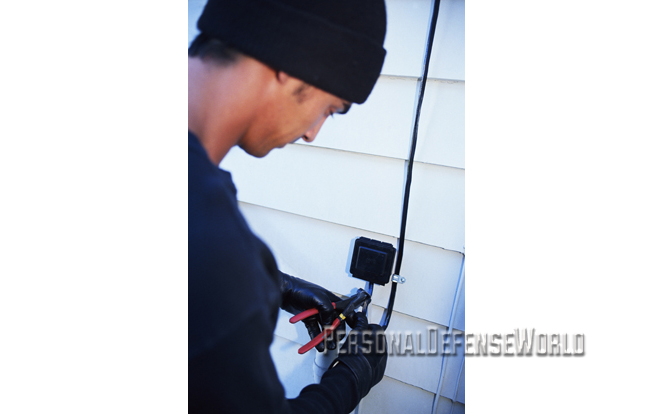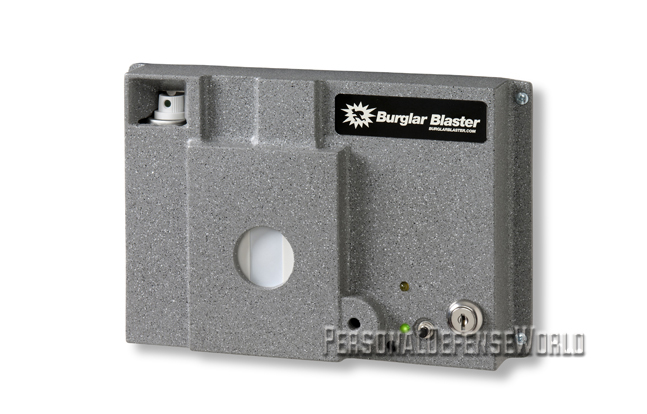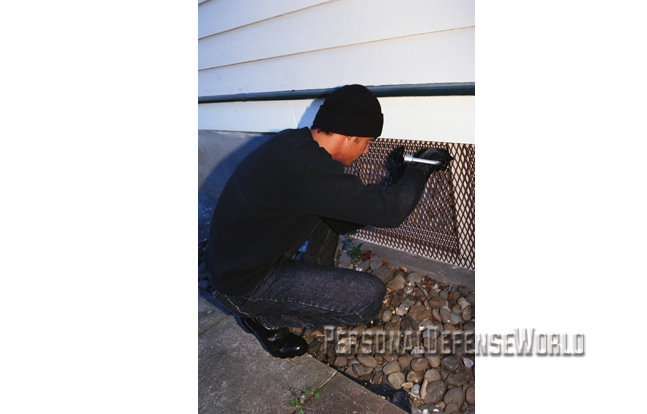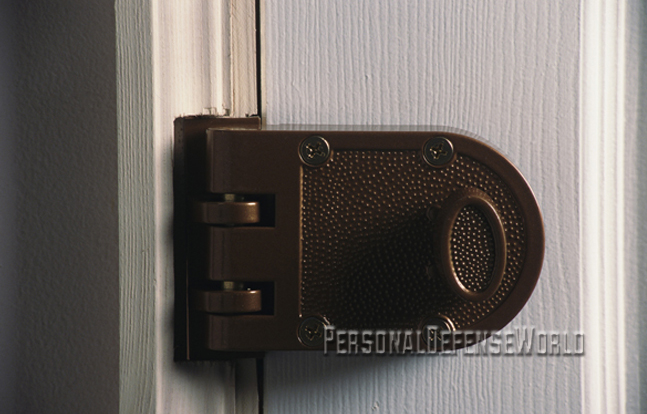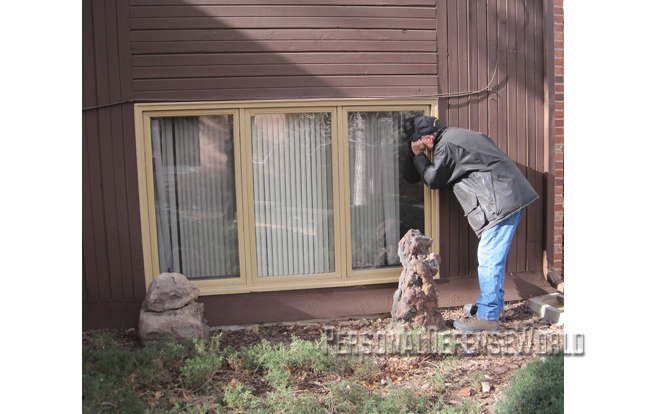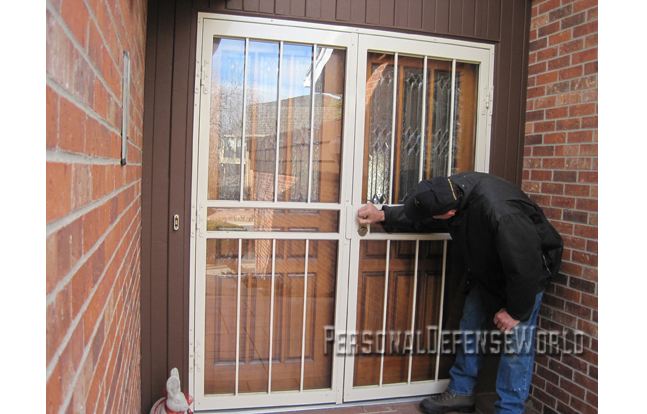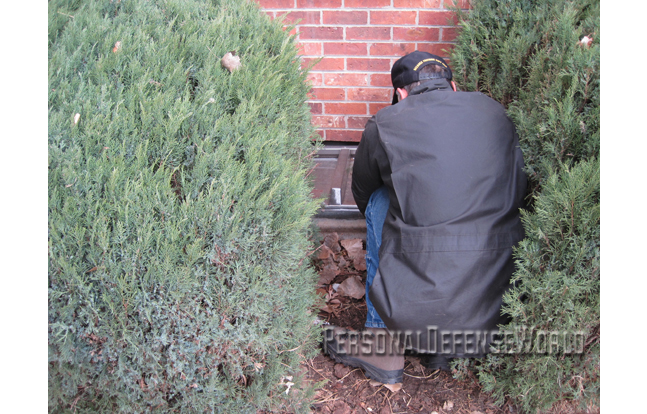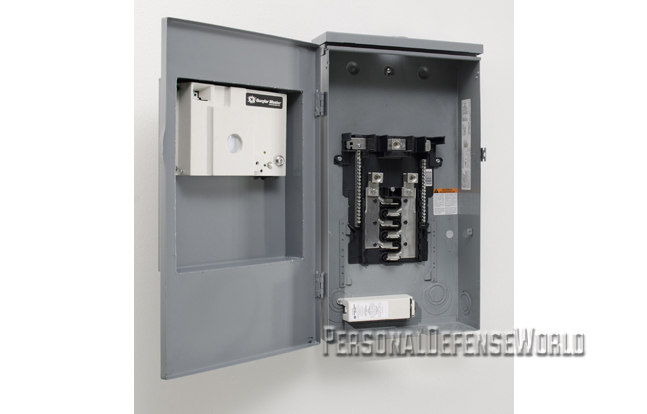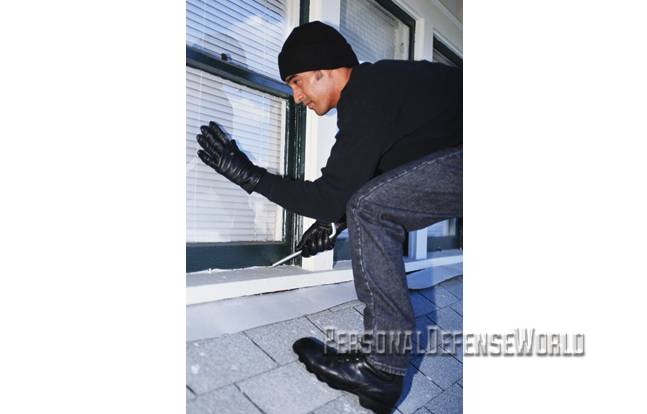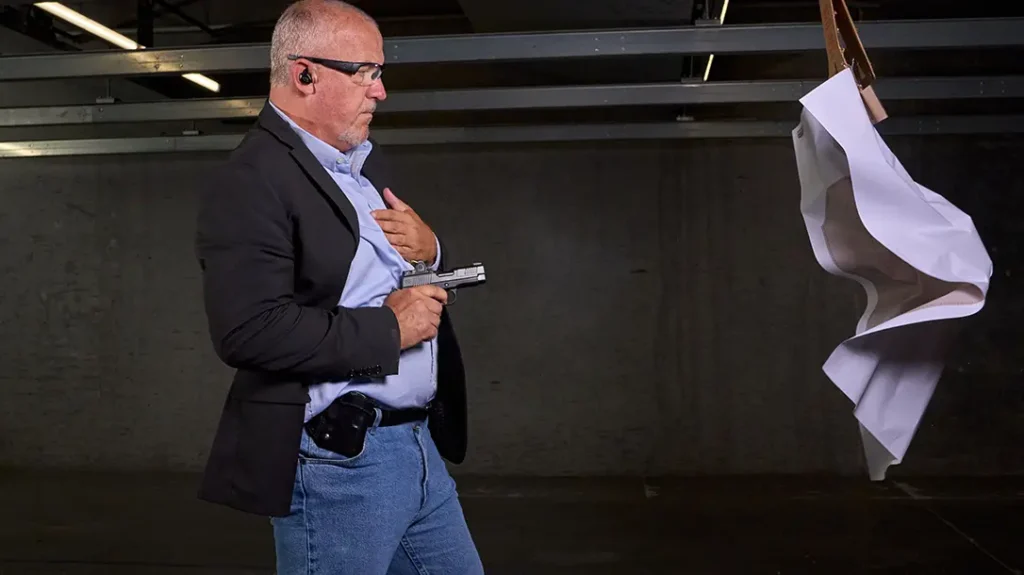Electronic Security, a safe room, safes, and precaution are essential Home Security Tactics.
“It takes a thief to catch a thief.” It’s a sage maxim that has been true for decades, and with good reason: Thinking like a thief is a great way to assess your home’s weak points and safeguard what’s yours. Consider an intruder walking down your street, looking for targets of opportunity. He or she sees an open garage door. To most of us, that’s a common sight, but to a burglar it’s an open invitation to steal your hard-won possessions. If your garage has a window, the robber can unlock it from inside your garage and wait for you to drive off. So, when can you safely leave your garage door open? Only when you’re entering and exiting your garage or working in your driveway.
Bad Habits
Leaving a key to your residence under a doormat or plant, or atop a window or doorsill, is another habit that can bite you hard. Buy a plastic, hollow rock that’s made especially for concealing keys. Or give those you trust a copy of your house key. An exterior door with glass is another invitation for a break-in. Replace a glazed door with an unglazed door, and you’ll sleep better. I won’t even discuss why it’s foolish to leave your home unlocked, even when your friends or relatives are on their way over and you have to make a quick run to the store.
Affordable Deterrence
Thieves are lazy, usually taking the path of least resistance. If they can choose your house or the one with security-system signs posted around the perimeter (or the one with a barking dog either in the house or yard), which one will they choose? If you cannot afford an electronic security system, you can afford to buy the signs. Go online, insert security sign for sale into a search engine and for $6 to $19 you’ll receive two or three signs that resemble the ones in your neighborhood. Most thieves can’t tell the difference and will likely seek an easier target. Deterring criminals is far less expensive than replacing stolen possessions.
Advertisement — Continue Reading Below
Also, exterior lighting can discourage nighttime intruders. At night, your neighbors and passersby will not notice if your home is being broken into, unless it’s lighted. Leaving lights and a television on while you are away also is a good preventive measure. Timers can turn lights on and off in different rooms, giving the impression that people are at home. Most thieves will bypass a well-lit home to look for a darkened one.
Hedges, shrubs and trees can make it easier for thieves to enter and leave your residence without being detected. Foliage close to your home can serve as excellent concealment for criminals, so trim or remove anything that makes a thief’s work easier. Replacing ordinary shrubs with those having sharp spines or thorns is a time-proven deterrent. And while you may not love or like dogs, they remain effective deterrents to robberies. Even small, yappy dogs can alert you to trouble. If your house is vulnerable to attack from motor vehicles, a number of strategically placed boulders will prevent it. Okay, you’ve made your home less vulnerable for a modest investment. What else can you do?
Size It Up
Take a few minutes to walk around your house with a pad and pen. What vulnerabilities do you observe? Is there a broken window lock that you’ve been meaning to replace? How about the sliding door that can be easily lifted out of its track? What about the ladder stored on the back porch that can be used to reach an upstairs window? Does the branch from a tree make a tempting bridge to an upstairs balcony? Is your garage door opener on your vehicle’s sun visor so a thief can use it to enter your garage?
Advertisement — Continue Reading Below
By now you should have some good ideas of how to make it harder for a thief to enter your home. And that’s really all you can do—detect, deter and delay intruders—because the threat cannot be eliminated. No home, townhome or condo is burglar-proof. (An upper-floor unit is difficult to break into but not impossible.) Security enhancements such as high-security deadbolts, which require a key to open, even from the inside, may qualify you to receive a discounted home-insurance premium.
Electronic Security
These systems are installed by security professionals and usually reduce your insurance premiums. They also provide peace of mind if you travel for business and leave your family at home. You can arm and disarm the system using a key or keypad. Once armed, the system’s sensors detect an opened door or window—using contact sensors or motion sensors—and send an electronic alert to a central station. If the homeowner does not phone the central station within a specified time, a security employee alerts law enforcement to the alarm. Some security companies have developed sophisticated software that enables customers to change illumination and other settings in their residence using a computer or cellphone. Occasionally security companies offer a discount on installation, hoping to make a profit on years of monthly service fees.
Security Window Film
Transparent or tinted to block ultraviolet rays, these tough polyester films (usually 4 to 12 millimeters thick) hold broken window fragments in place after impact. Imagine a thief’s surprise and frustration when, after smashing a window, the broken pieces remain in place. Manufactured by several firms, the film is used anywhere that security needs to be beefed up. It’s great for sliding glass doors, frequently the weak link in an otherwise secure residence. Security film has the advantage of not relying on electricity and not requiring ongoing service costs as is the case with electronic security systems. Many manufacturers guarantee security films against defects for life. By providing the number of square feet of glass to be filmed and the window dimensions, you can obtain bids from installers without having them come to your home. Make sure that your installer is experienced. Smaller homes can be filmed in a day.
Advertisement — Continue Reading Below
Lock It
Safes were created to deter, delay and defeat intruders. Like most things, you get what you pay for. If you will be keeping documents in your safe, be sure to get one that has a high fire rating. Do enough research that you know the terminology. Seek a safe with concealed hinges and several locking bolts so that thieves cannot cut the hinges off and remove the door. Do not locate your safe in a garage, where criminals can loop a winch cable around it, winch it into a truck, drive it off and crack it at their leisure. Few criminals—remember, they’re lazy—will want to grunt a large safe out of a basement. If you don’t have enough precious contents to fill a large safe, consider filling it with free weights to make it even harder to move. Used safes are a fine idea as you can buy ones with cosmetic scratches at a steep discount. By negotiating, you can even get the delivery included in your purchase price, a wise idea when dealing with objects that can weigh a half-ton empty.
Build a Safe Room
A safe room is an excellent way to protect your family in case of burglary or home invasion. If you live in Tornado Alley or a hurricane-prone area, consider having a safe room. The strongest and least expensive safe rooms take advantage of existing basement walls, which usually are poured-in-place, reinforced concrete. Building a safe room into a basement corner creates a refuge that resists determined physical attack. Solid concrete blocks (8 by 16 by 4 inches) will deter most attackers, but remember that the door is the weak point. Leave a dedicated cellphone inside the room so that your loved ones can call authorities from safety. By locating your safe in a safe room, you have an extra layer of protection for your valuables. The additional margin of safety provided by a safe room can certainly be worth the price.
Editor’s Note: N.E. MacDougald’s new book, Soldier of Fortune Guide to Surviving the Apocalypse: The Ultimate Guide to Protecting Your Family Against Societal Collapse, is available from Amazon.com and can be found at Barnes & Noble. The book’s 200-plus pages contain scores of color photographs and reveal information not found elsewhere.
Advertisement — Continue Reading Below
BUY NOW! AT www.personaldefenseworld.com/subscribe/personal-home-defense/.
